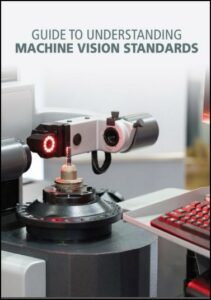In simple terms “Machine Vision” is the use of machines with vision capabilities to do something useful. As computers get smaller and more powerful and combined with better image sensors, applications for machine vision are becoming wider and more diverse and go well beyond the traditional use of machine vision in industrial automation and manufacturing. As the industry gets larger, it becomes increasingly important to have well regulated industry standards in order to provide interoperability between systems as well as to provide users with choice, and ultimately to provide efficiency within the industry as a whole.
In 2009 the leading industry associations in machine vision, the Association for Advancing Automation (A3, North America), the European Machine Vision Association (EMVA) and the Japan Industrial Imaging Association (JIIA) joined forces and entered into a cooperation agreement on machine vision standards, called the “G3”. The VDMA (Germany) and the CMVU (China) joined in 2014 and 2015, respectively. The purpose of the G3 agreement is to provide overall governance to the various standards and to coordinate the activities of the separate industry associations on a global scale for the benefit of the industry. The G3 committee is made up of members from each of the five organizations signed up to the agreement.
Coordination of the International Vision Standards
The development and management of the standards that include Camera Link, Camera Link HS, CoaXPress, GenICam, GigE Vision, IIDC2, and USB3 Vision, are coordinated by individual technical committees managed by the industrial association that hosts the particular standard. The International Vision Standard Meeting (IVSM) takes place in the spring and the fall each year at various locations around the world, with each one hosted by a different member company from within the industry. During the week-long event, committees representing each of the standards discuss progress, road maps and collaboration. The meetings are usually followed by a day of interoperability testing – otherwise known as a “plugfest” – an opportunity to plug your products into other company’s systems to check compatibility. Also at industry trade shows around the world, the chairs of the various standards committees give regular update presentations on the respective standards as well as future plans and roadmaps.
One of the significant achievements of the G3 agreement has been the Future Standards Forum (FSF) which is a working group setup to provide an industry wide standards roadmap in a cooperative manner between each of the industrial associations.
Summary of Machine Vision Standards
The various machine vision standards are listed below along with the latest release version:
Camera Link – Hosted by A3; release date 2000; current version 2.1
GenICam – Hosted by EMVA; release date 2006; current version 2024.04
GigE Vision – Hosted by A3; release date 2006; current version 2.2
CoaXPress – Hosted by JIIA; release date 2010; current version 2.1
Camera Link HS – Hosted by A3; release date 2012; current version 1.2
IIDC2 – Hosted by JIIA; release date 2012; current version 1.1.0
USB3 Vision – Hosted by A3; release date 2013; current version 1.2
Additional Information
The A3, EMVA, JIIA, VDMA and CMVU have cooperated on the publication of an excellent document giving a detailed overview of all the machine vision standards with useful comparison charts. Download “Guide to Understanding Machine Vision Standards” (2022)

Keep up to date with recent developments
Machine vision standards news – read our reports from IVSM meetings, where updates to standards are discussed and implemented:
IVSM Spring 2024, Tokyo, Japan
IVSM Fall 2023, Toronto, Canada
IVSM Fall 2020, virtual meeting
IVSM Fall 2019, Stresa, Italy
IVSM Spring 2019, Suzhou, China